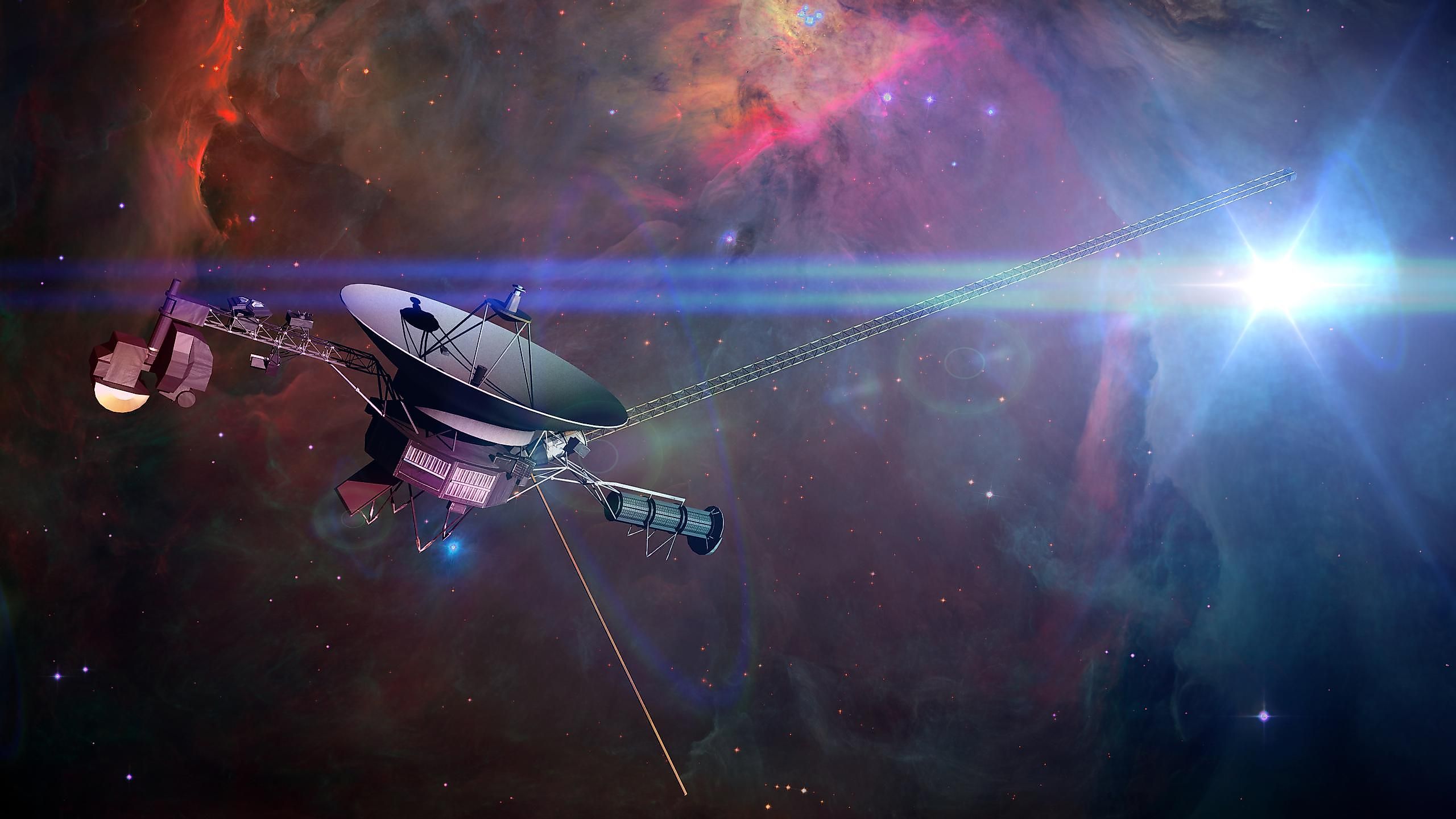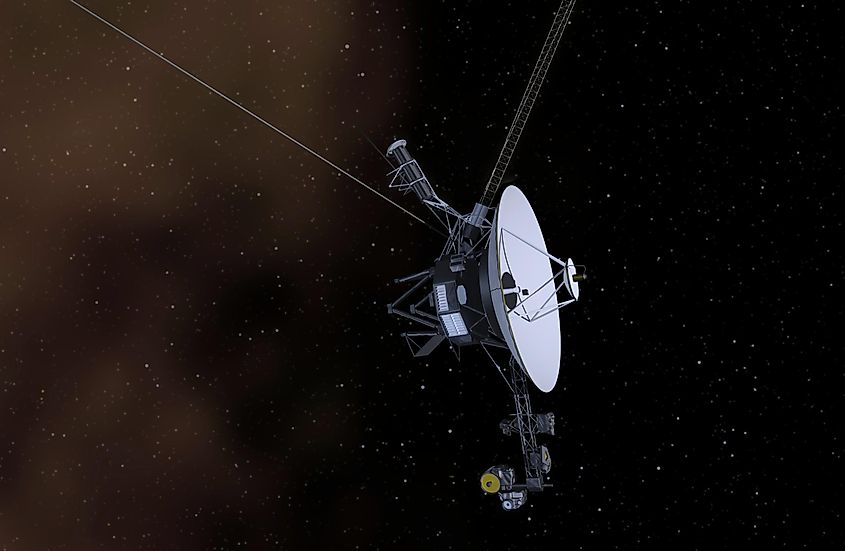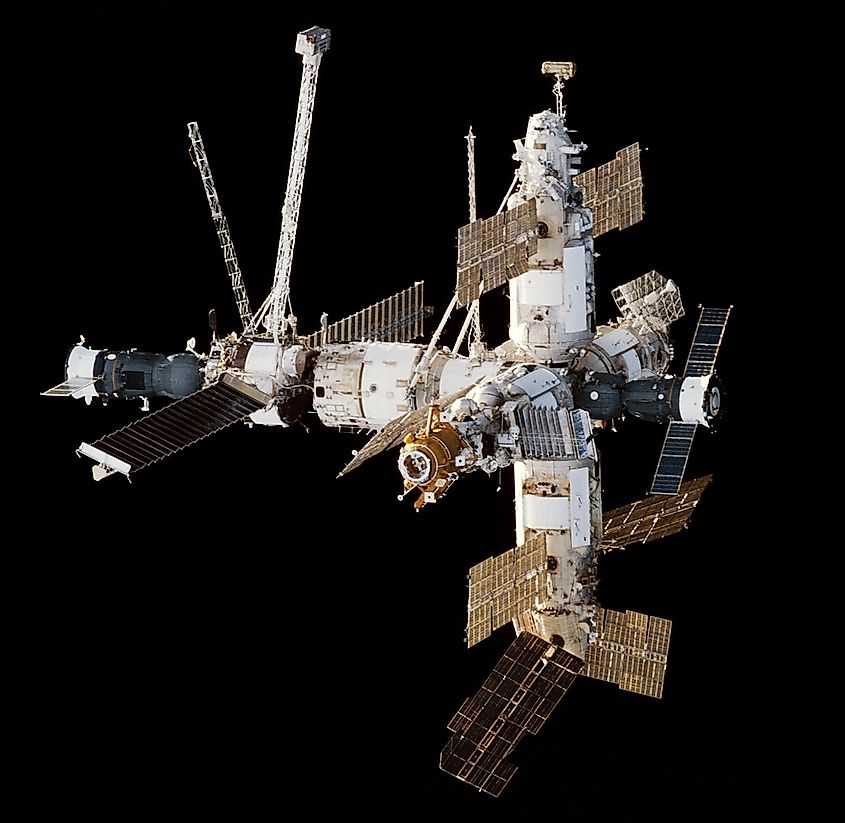
What Is The Longest Space Mission?
The first successful space mission was the launch of Vostok 1, which saw Russian cosmonaut Yuri Gagarin become the first human to enter space and Earth orbit in 1961. Since that time, humanity has embarked on hundreds of missions beyond the Earth’s atmosphere. Some have lasted mere hours, while others have lasted decades. To date, the single longest mission in space is the Voyager mission, which has been ongoing for over 45-years now.
The Voyager Mission

The Voyager mission involved two spacecraft: Voyager 1 and Voyager 2. Both were launched in 1977 on a journey to explore the gas giants of our solar system. The Voyager mission took advantage of a rare planetary alignment that occurs once every 175-years, which saw the four outer planets align in such a way that a spacecraft could rely on gravitational energy to propel itself from one planet to the next. While most spacecraft utilize an onboard propulsion system, the Voyager spacecrafts used the gravity of the planets to slingshot themselves to higher velocities towards the next planet. Originally, the Voyager spacecrafts were only intended to visit Jupiter and Saturn, and the mission was only supposed to last five years. The instruments onboard the Voyager spacecrafts were only designed to last a few years, and funding was only provided for five years as well. However, just in case, scientists made sure that the trajectory of Voyager 2 would carry it towards Uranus after its Saturn flyby. After Voyager 2 completed its flyby of Saturn in 1981, scientists realized that the instruments remained functional enough that a flyby of Uranus, and perhaps even Neptune, were very possible. NASA provided additional funding to the mission and Voyager 2 continued on to Uranus and completed the first and only flyby of the planet in 1986. After Uranus, Voyager 2 completed its flyby of Neptune in 1989, marking the first and only flyby of the outermost planet.
While one may assume that the Voyager mission ended with Neptune, the mission continues to remain active. After the Voyager spacecrafts completed their objective of planetary exploration, they were given a new objective: to become the first spacecraft to leave the solar system and enter interstellar space. The trajectory and speed of the two Voyagers meant that they would eventually leave the solar system entirely, and knowing this, NASA kept the mission going. 35-years after the launch of Voyager 1, NASA confirmed that it had entered interstellar space in 2012, making it the first human-made object to leave the solar system. Six years later in 2018, Voyager 2 left the solar system. The Voyager mission is still ongoing, and scientists continue to receive data on interstellar space from the two spacecraft. A mission that was only meant to last five years has now been ongoing for over 45-years.
Longest Human Spaceflight Mission

Robotic spacecraft missions generally last longer than human space missions. To date, the longest time a single person has spent in space is 437-days. The mission was completed by Russian cosmonaut Valeri Polyakov from 1994 to 1995 aboard the Russian space station Mir. As of yet, this remains the largest number of consecutive days that someone has remained in space. If humans ever hope to settle on Mars or any other celestial object in our solar system, we will need to remain in space for extended periods of time. Even a trip to Mars could require years of spaceflight. It might be a while yet before any human mission in space overtakes the Voyager mission for the longest space mission.











